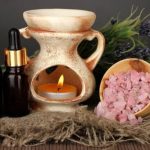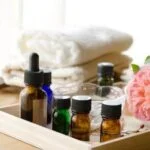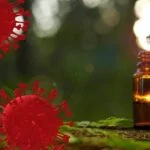The use of essential oils has gained significant popularity in recent years, with more and more people turning to these natural remedies for their potential health benefits. However, there is often confusion around the terms “aromatherapy” and “therapeutic essential oils.” While they are related, they serve different purposes and have distinct characteristics.
Aromatherapy is a holistic practice that involves using essential oils for their aromatic properties to promote relaxation, enhance mood, and improve overall well-being. It focuses primarily on the scent of the oils and how they can affect emotions and mental state. Aromatherapy is commonly used in spa settings or as a self-care practice at home through diffusing the oils or adding them to bath products.
On the other hand, therapeutic essential oils are specifically chosen and used for their practical application in addressing specific physical and mental health concerns. They are often used for targeted purposes such as pain relief, immune support, stress management, or enhancing cognitive function. Therapeutic essential oils are typically higher in potency and may require dilution before use.
The confusion between aromatherapy and therapeutic essential oils stems from the overlap in their usage. Many essential oils can be used for both aromatic purposes and specific therapeutic applications. However, it is important to understand that while all therapeutic essential oils can be used in aromatherapy, not all aromatic essences are suitable for therapeutic use.
As we dive deeper into the differences between these two terms, it becomes clear that their distinctions lie within their chemical composition, extraction methods, quality control measures, usage guidelines, health benefits, and safety considerations. By understanding these aspects, individuals can make informed choices when utilizing these powerful tools for their own wellness journey.
Defining Aromatherapy
Aromatherapy is a holistic healing practice that utilizes the aromatic properties of essential oils to promote relaxation, enhance mood, and support overall well-being. The term “aromatherapy” itself suggests its emphasis on using scents or aromas as a means of therapy. It is important to note that aromatherapy primarily focuses on the psychological and emotional aspects of wellness rather than addressing specific physical ailments.
The Power of Aromatic Properties
Essential oils used in aromatherapy are specifically chosen for their pleasant fragrances and their potential effects on emotions and mood. When inhaled, the aroma molecules of these oils travel to the olfactory system, which connects directly to the brain’s limbic system – responsible for regulating emotions and memories. This direct connection is what makes the use of essential oils in aromatherapy so powerful.
Promoting Relaxation and Mood Enhancement
Aromatherapy is commonly practiced through methods such as diffusing essential oils, using them in massage oils or bath products, or even inhaling them directly from a bottle or handkerchief. These practices can help create a calm and soothing environment, relieving stress and anxiety. Oils like lavender, chamomile, and bergamot are frequently used in aromatherapy for their known relaxing properties.
Notable Benefits Beyond Relaxation
While promoting relaxation is a central aspect of aromatherapy, it is important to recognize that certain essential oils also have additional benefits beyond mood enhancement. Some oils possess anti-inflammatory properties (e.g., peppermint oil) or can act as mild antiseptics (e.g., tea tree oil), which may offer support for physical health concerns indirectly by reducing stress levels.
However, it should be noted that when it comes to targeting specific physical conditions, therapeutic essential oils are typically more effective due to their distinct chemical composition.
In summary, aromatherapy centers around the power of scent and its ability to influence emotions and mood. By utilizing essential oils with aromatic properties, this practice aims to create a harmonious environment that promotes relaxation and overall well-being.
However, it is important to note that aromatherapy should not be considered a substitute for medical treatment but rather as a complementary approach to enhance emotional wellness. In the following section, we will delve into the concept of therapeutic essential oils and how they differ from aromatherapy in terms of their practical application in addressing specific physical and mental health concerns.
Understanding Therapeutic Essential Oils
Therapeutic essential oils are a specific type of essential oil that is used for their medicinal properties. Unlike aromatherapy, which focuses on the aromatic properties of essential oils for promoting relaxation and mood enhancement, therapeutic essential oils are used to address specific physical and mental health concerns. These oils are carefully selected and utilized for their potential healing benefits.
Definition of Therapeutic Essential Oils
Therapeutic essential oils are highly concentrated plant extracts that contain volatile compounds with unique properties. These compounds have been found to possess therapeutic effects on various bodily systems, including the respiratory, digestive, immune, and nervous systems. They can be derived from different parts of plants such as flowers, leaves, stems, bark, or roots through various extraction methods like steam distillation or cold pressing.
Practical Application of Therapeutic Essential Oils
One of the distinguishing features of therapeutic essential oils is their practical application in addressing specific physical and mental health concerns. These oils are believed to have an impact on the body at a cellular level due to their chemical composition. For example, lavender oil is commonly used for its calming and sleep-inducing properties, while peppermint oil can help alleviate headaches and improve digestion.
Therapeutic essential oils can be applied topically by diluting them with carrier oils and massaging into the skin. They can also be inhaled through diffusers or diluted in bathwater for inhalation. Some oils may even be safe for internal use under the guidance of a qualified aromatherapist or healthcare professional. However, it’s important to note that not all therapeutic essential oils are suitable for ingestion, so caution must always be exercised.
In summary, therapeutic essential oils differ from aromatherapy in their focus on addressing specific physical and mental health concerns. These oils offer unique benefits through their distinct chemical composition and practical applications such as topical use or inhalation. Understanding the differences between aromatherapy and therapeutic essential oils can help individuals make informed choices when seeking natural remedies for their health concerns.
Chemical Composition
One of the major distinctions between aromatherapy and therapeutic essential oils lies in their chemical composition. While both types of oils are derived from plants, they are often intended for different purposes due to variations in their chemical makeup.
Aromatherapy oils are primarily used for their aromatic properties, which are believed to promote relaxation, enhance mood, and create a positive atmosphere. These oils are typically sourced from plants such as lavender, peppermint, or eucalyptus, and they contain volatile compounds that give them their distinct fragrance. The main constituents of aromatherapy oils are often terpenes and esters, which contribute to their pleasant scent.
On the other hand, therapeutic essential oils are specifically formulated to address specific physical and mental health concerns. These oils may also have aromatic qualities, but the focus is primarily on their therapeutic properties rather than their scent.
The chemical composition of therapeutic essential oils can vary significantly depending on the desired effect. For example, oils used for promoting relaxation might contain compounds such as linalool or geraniol, while those used for addressing inflammation might contain anti-inflammatory components like menthol or camphor.
In summary, while both aromatherapy and therapeutic essential oils derive from plants and possess unique aromatic qualities, it is their distinct chemical compositions that set them apart. Aromatherapy oils emphasize aromatic properties for relaxation and mood enhancement purposes, whereas therapeutic essential oils prioritize targeted health benefits through a carefully selected combination of chemical constituents. By understanding these differences in chemical makeup, individuals can make more informed choices when selecting the appropriate oil for their specific needs.
Method of Extraction
The method of extraction plays a crucial role in determining the quality and therapeutic properties of both aromatherapy and therapeutic essential oils. There are several common extraction methods used in the industry, each producing oils with different characteristics. It is important to understand these methods to ensure that you are using genuine and effective essential oils.
One of the most popular extraction methods for both types of oils is steam distillation. This process involves using steam to extract the volatile compounds from plant materials, which are then captured and condensed into essential oil. Steam distillation is widely used because it preserves most of the beneficial properties of the plant material and produces high-quality oils. However, it may not be suitable for delicate or heat-sensitive botanicals.
Another commonly used method for extracting essential oils is cold-pressing, also known as expression or mechanical extraction. This method is typically used for obtaining citrus essential oils from the peels of fruits such as oranges and lemons. Cold-pressing involves mechanically squeezing the fruit peels to release their essential oil. It is a simple and natural method that results in highly aromatic oils but may not retain all of the plant’s beneficial compounds.
Some other less common extraction methods include solvent extraction, enfleurage, and carbon dioxide extraction. Solvent extraction involves using chemical solvents like hexane or ethanol to dissolve the essential oil from the plant material. Enfleurage is a labor-intensive technique in which flowers are placed on a layer of fat to infuse their fragrance over time. Carbon dioxide extraction uses pressurized carbon dioxide to extract essential oils without leaving any chemical residue.
It is important to note that different plants require different extraction methods based on their unique properties. Therefore, it is crucial to choose reputable brands that disclose their extraction methods and provide information about their sourcing practices. By understanding the extraction methods used, you can make informed decisions about the quality and therapeutic potential of the essential oils you choose to use.
| Extraction Method | Description |
|---|---|
| Steam Distillation | Involves using steam to extract volatile compounds from plant materials |
| Cold-pressing | Mechanically squeezing fruit peels to release essential oil |
| Solvent Extraction | Uses chemical solvents like hexane or ethanol to dissolve essential oil from plant material |
| Enfleurage | Labor-intensive technique involving flowers and fat for fragrance infusion over time. |
| Carbon Dioxide Extraction | This method extracts essential oils utilizing pressurized carbon dioxide. |
Quality Control
Quality control is paramount when it comes to both aromatherapy and therapeutic essential oils. Ensuring that the oils are authentic, pure, and of high quality is crucial in order to obtain the desired therapeutic benefits.
With the increasing popularity of essential oils, there has been a rise in the availability of counterfeit or low-quality products on the market. Therefore, it is important for consumers to be knowledgeable about quality control measures and how to ensure they are purchasing authentic and pure oils.
One way to ensure authenticity and purity is by looking for reputable suppliers who provide detailed information about their sourcing, production methods, and testing procedures. Trustworthy suppliers often have their oils tested by third-party laboratories to verify their purity levels and check for any contaminants or adulterants. Transparency in sourcing practices, such as providing information on where the plants were grown and harvested, can also indicate a commitment to quality.
In addition to sourcing practices, proper labeling is another important aspect of quality control. Labels on essential oil bottles should contain information about botanical names, country of origin, extraction method used, and any certifications obtained (such as organic or fair trade certifications). This allows consumers to make informed choices based on their specific needs or preferences.
| Aspect | Guidelines |
|---|---|
| Sourcing | Look for reputable suppliers who provide information on sourcing practices |
| Third-Party Testing | Ensure that oils have been tested by third-party laboratories for purity levels |
| Labeling | Check for comprehensive labels that include botanical names, country of origin, extraction method, and certifications |
| Aroma and Consistency | Authentic essential oils should have a characteristic aroma and consistent viscosity |
| Price | Beware of unrealistically low prices, as they may indicate poor quality or adulteration |
It is also important to pay attention to the aroma and consistency of the oils. Authentic essential oils should have a characteristic aroma that matches the expected scent of the specific plant or botanical. Additionally, their viscosity or consistency should be relatively uniform and not contain any additives or solvents.
Price can also be an indicator of quality. While high-quality oils do come at a cost, excessively low prices may suggest poor quality or adulteration. If a price seems too good to be true, it is advisable to exercise caution and investigate further before making a purchase.
By adhering to these quality control guidelines and being aware of potential red flags, consumers can ensure that they are purchasing authentic and pure oils for their aromatherapy or therapeutic needs. In doing so, they can maximize the effectiveness and safety of their essential oil experience while enjoying the numerous benefits these natural substances have to offer.
Usage and Application
Usage and Application: Detailing the various ways aromatherapy and therapeutic essential oils are used, including diffusing, topical application, and ingestion (if applicable).
Aromatherapy and therapeutic essential oils can be used in a variety of ways to promote well-being and address specific health concerns. Understanding how to properly use these oils is essential for maximizing their benefits. Here are some common methods of usage and application:
- Diffusing: One popular way to enjoy the aromatic properties of essential oils is through diffusion. This involves adding a few drops of oil to a diffuser, which disperses the scent into the air. Inhalation of the aroma can help promote relaxation, enhance mood, or provide respiratory support depending on the specific oil used.
- Topical Application: Applying essential oils topically allows for direct absorption into the skin. However, it is crucial to dilute the oil with a carrier oil like jojoba or coconut oil before applying it to the skin to minimize any potential irritation or sensitivity. Massage therapists often use this method during therapeutic sessions to target specific areas and promote relaxation or pain relief.
- Ingestion (if applicable): It’s important to note that not all essential oils are safe for internal use, so this method should only be pursued under the guidance of a trained aromatherapist or healthcare professional. Some therapeutic essential oils can be consumed by adding a drop or two to water, tea, or food recipes. This method allows for systemic benefits and can address issues like digestive discomfort or immune support.
When using aromatherapy and therapeutic essential oils, it is crucial to follow proper guidelines for safety and effectiveness:
- Always start with low dilutions when using them topically and gradually increase if needed. Some oils may require higher dilutions due to their potency.
- When diffusing oils, ensure that they are being diffused in well-ventilated spaces.
- Avoid using undiluted essential oils directly on the skin, as this may cause irritation or allergic reactions.
- Keep essential oils out of reach of pets and children to prevent accidental ingestion.
By understanding the different methods of usage and application, individuals can make informed choices when incorporating aromatherapy and therapeutic essential oils into their wellness routines.
Health Benefits
Aromatherapy and therapeutic essential oils both offer a wide range of health benefits, although they differ in their approach and applications. Aromatherapy primarily focuses on using essential oils for their aromatic properties to enhance mood, relax the mind, and create a calming environment. Many people turn to aromatherapy as a natural alternative for stress relief, anxiety reduction, and improving overall mental well-being. The soothing scents of essential oils can have a powerful effect on our emotions and promote relaxation.
On the other hand, therapeutic essential oils are specifically chosen and applied for their targeted physical and mental health benefits. These oils are selected for their specific properties that address various conditions such as respiratory issues, muscle pain, skin irritations, or even digestive problems. Therapeutic essential oils are often used as part of holistic treatments or complementary therapies to alleviate symptoms associated with certain ailments.
One example of the unique health benefits offered by therapeutic essential oils is their potential to boost the immune system. Oils like tea tree, eucalyptus, or lemon have antimicrobial properties that can help fight off viruses or bacteria when diffused into the air or applied topically (diluted correctly). These types of oils are commonly used during cold and flu seasons or when individuals want an extra layer of protection against germs.
Overall, while both aromatherapy and therapeutic use of essential oils offer various health benefits, it’s important to understand their distinct purposes. Aromatherapy focuses more on emotional well-being and relaxation through scent stimulation, while therapeutic essential oils provide targeted relief for physical ailments. Each approach has its place in promoting overall wellness depending on individual needs and preferences.
Safety Considerations
Safety is a crucial aspect to consider when using both aromatherapy and therapeutic essential oils. While these oils offer various health benefits, it is important to exercise caution and take necessary precautions to ensure their safe use.
Proper dilution is one of the most important safety considerations when using essential oils. Undiluted essential oils can be potent and may cause skin irritation or other adverse reactions. It is recommended to dilute essential oils with a carrier oil, such as almond oil or coconut oil, before applying them topically.
The appropriate dilution ratio depends on the age, health condition, and sensitivity of the individual. For example, adults typically use a 2-5% dilution rate, while children and elderly individuals may require lower concentrations.
Another safety concern is the potential for allergic reactions. Essential oils are derived from various plant sources, and some individuals may have allergies or sensitivities to certain plants or their constituents. It is crucial to conduct a patch test before using a new essential oil for the first time. Apply a small amount of diluted oil to a small area of skin and observe for any adverse reactions. If redness, itching, or inflammation occurs, discontinue use of that particular oil.
Certain individuals should also exercise caution when using essential oils due to specific contraindications. For example, pregnant women should avoid certain essential oils that can potentially stimulate uterine contractions or harm the developing fetus. Similarly, individuals with underlying medical conditions such as epilepsy or high blood pressure should consult with a healthcare professional before using certain essential oils.
Conclusion
In conclusion, it is clear that while aromatherapy and therapeutic essential oils may have some similarities, they serve distinct purposes in promoting overall well-being. Aromatherapy primarily focuses on using essential oils for their aromatic properties and promoting relaxation and mood enhancement. It is often used for stress relief, improving sleep quality, and creating a pleasant atmosphere in homes or spa settings.
On the other hand, therapeutic essential oils are specifically formulated to address specific physical and mental health concerns. They are used to alleviate pain, reduce inflammation, boost the immune system, and support emotional well-being. Therapeutic essential oils are carefully selected and blended based on their chemical composition to maximize their healing properties.
One key difference between the two lies in their chemical composition. Aromatherapy oils are often less concentrated than therapeutic essential oils, containing a lower percentage of active compounds. This makes them safer for general use but may result in a milder effect compared to therapeutic oils.
Moreover, the method of extraction also plays a role in distinguishing between aromatherapy and therapeutic essential oils. Aromatherapy oils are typically obtained through steam distillation or cold-pressing methods, preserving their aromatic properties but potentially altering their therapeutic capabilities. On the other hand, therapeutic essential oils may undergo additional processes such as CO2 extraction or fractionation to enhance specific bioactive constituents.
Regardless of these differences, both aromatherapy and therapeutic essential oils require stringent quality control measures to ensure authenticity and purity. When using either type of oil, it is important to follow safety guidelines such as proper dilution ratios to avoid adverse reactions.
Frequently Asked Questions
What does therapeutic mean in essential oils?
The term “therapeutic” in relation to essential oils refers to their potential therapeutic benefits or healing properties. Essential oils are highly concentrated liquids extracted from plants, and they contain the natural volatile compounds that give each plant its unique aroma.
These compounds can have various effects on the body, mind, and emotions when used aromatically, topically, or internally. When essential oils are labeled as “therapeutic grade,” it generally implies that they are pure and unadulterated, without any synthetic additives or contaminants.
What can you use therapeutic grade essential oils for?
Therapeutic grade essential oils can be used for a wide range of purposes due to their potential therapeutic benefits. They are commonly used in aromatherapy to promote relaxation, reduce stress and anxiety, uplift mood, and support emotional well-being.
Many people also use them for physical health purposes such as relieving headaches, soothing muscle pain, boosting the immune system, supporting respiratory health, aiding digestion, and promoting healthy skin. However, it’s important to note that while essential oils can provide potential benefits, they should not replace professional medical advice or treatment.
Are aromatherapy oils different from essential oils?
Aromatherapy oils and essential oils are essentially the same thing but referred to differently based on their usage context. The term “essential oils” is more often used in general discussions regarding these highly concentrated plant extracts.
On the other hand, “aromatherapy oils” specifically refers to the use of these essential oils for aromatherapy purposes, which involves inhaling their aromatic vapors to stimulate the olfactory system and create therapeutic effects on the body and mind. So essentially, all aromatherapy oils are essential oils; however, not all essential oils may be intended for aromatherapy use as they can also be utilized topically or internally for different purposes depending on their specific properties and safety guidelines.

Are you looking for a natural way to improve your health and wellbeing?
If so, aromatherapy may be the answer for you.





